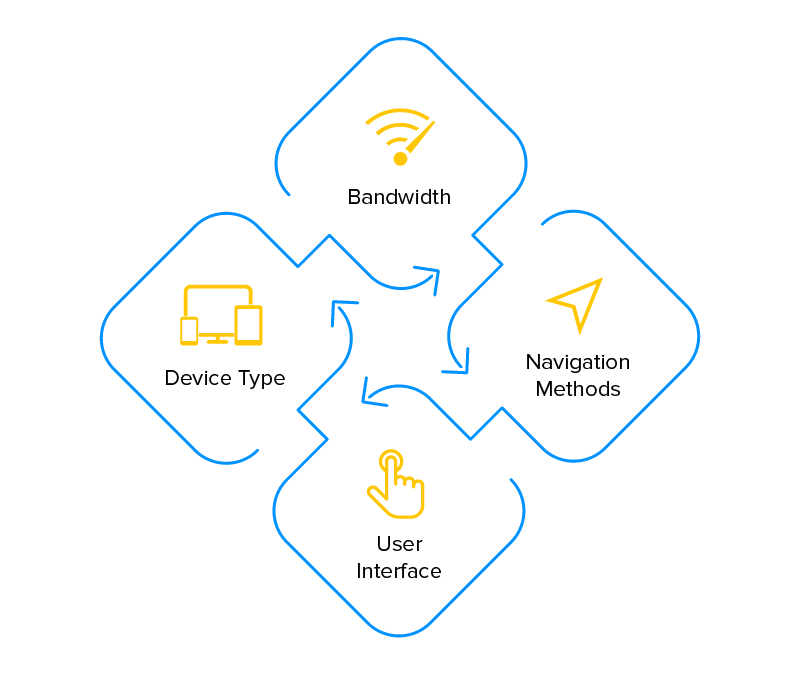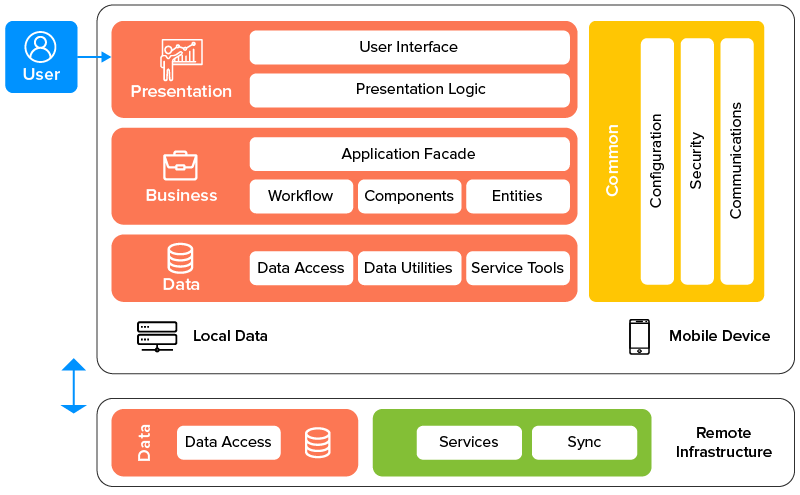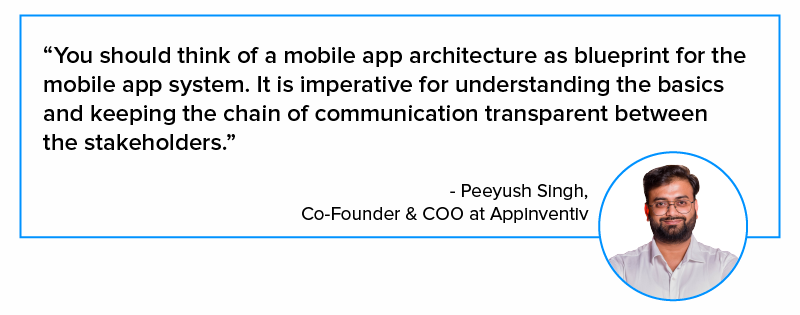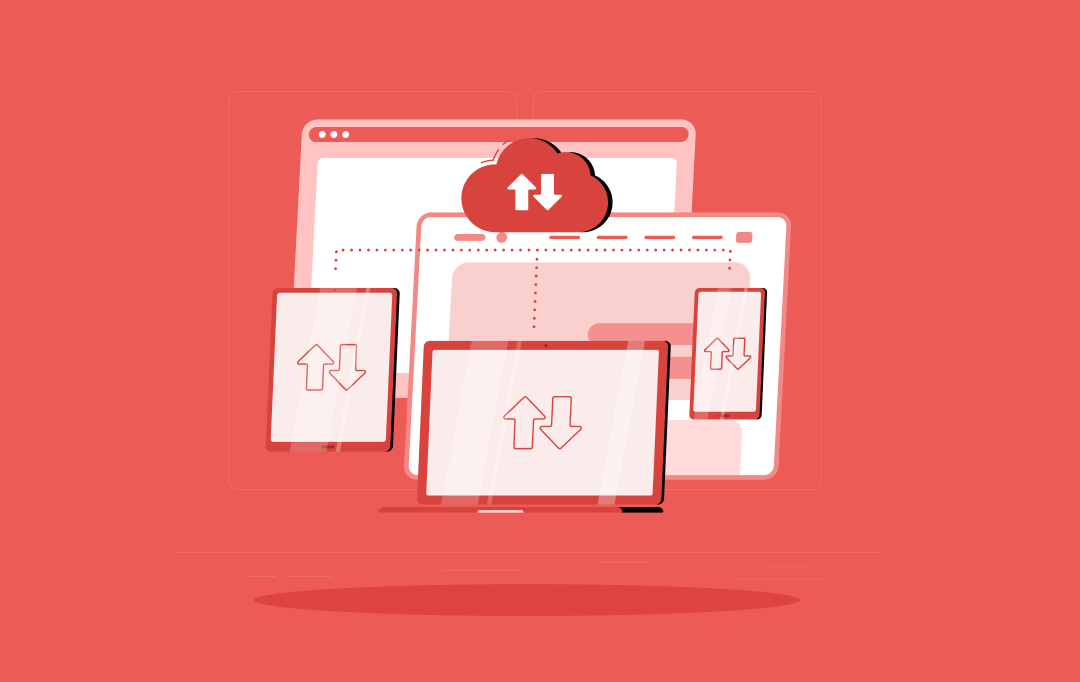What Do We Mean by App Architecture?
The technical definition: It is a combination of structural elements and their individual set of interfaces using which a system is composed in addition to the framework behavior of all the structural elements.
In layman’s terms: Mobile application architecture is a set of techniques and model/design that are supposed to be followed for building a structured mobile app. It can also be denoted as an app’s skeleton upon which the working and quality is based.
So, everything that defines an app – how the data would move, the UI/UX, the choice of platform, the tech stack, etc. is a part of Mobile app architecture patterns.
What happens when Mobile App Infrastructure is not paid its fair share of attention?
Selecting the right architecture must be a default primary step in the planning and designing phase of a software development project. However, most often than not, the stage is ignored simply on the grounds of making the development process slower and thus more extensive. While ironically, the lack of it is a major reason behind a mobile application failure.
The lack of an enterprise application architecture, though, introduces a number of issues in the software:
- Makes it more prone to errors
- Makes development and maintenance difficult
- Lowers code readability
- Makes Agile cumbersome
- Results in a difficult to test source code
The glaring issues attached with the lack of an architecture or of it being deemed unimportant gives birth to the need to build a mobile application architecture that is right and accounts to all the necessary considerations.
The Elements of App Architecture (app architecture basics)

A. Device determination
At this stage, you will have to keep the device type into consideration. This would need you to study the screen size, resolution, CPU characteristics, memory, and storage space, plus the availability of the development tool environment.
The app features would have dependency on the software or hardware, which is why it is important to have the details of devices on which the app would run.
B. Bandwidth status
Throughout its lifecycle, your application will face several events where the internet connectivity will either be dwindling or there would be none at all. Your app architecture will have to be built noting the worst network conditions. You will have to design the data access mechanism, caching, and state management according to the worst case scenarios.
C. Right User Interface
The importance of UI/UX within an application is unquestionable. Ensuring that your UI is devised to keep users engaged and give them an uncluttered experience is an important part of your mobile app infrastructure – One that would define how well it is designed.
D. Navigation Approach
While majorly accounted for the app architecture designing front, the element would call for an expertise in both backend and frontend. On the basis of your understanding of who the customers are and what are their app requirements, you should analyze which one of these would be good for your app:
- Stacked navigation bar
- Single view
- Scroll views
- Tab controller
- Search based
- Model controller
- Gesture driven
Knowing the elements will only take you halfway when dissecting what is mobile app architecture to its entirety.
All the mobile app architectures are divided into three layers. Understanding what these three layers are, helps mobile app development companies understand what architectures are made of.
The Three Layers of Mobile App Architecture

Presentation Layer
The aim of this layer is to look into how to present the application to end users. When designing this layer, the mobile app developers must identify the correct client type for intended infrastructure. Additionally, the client’s deployment restrictions must also be kept in mind. Another necessity is selecting the correct data format and using robust data validation mechanisms for protecting the apps from invalid entry.
Business Layer
This layer looks into elements on the business front. In layman words, it looks into the way businesses are presented to the end users. This consists of business components, workflow, and the entities under two sub-layer hood: Domain model and Service.
The service layer looks into the definition of common application function set that are available to the end users. While the domain model layer looks into the knowledge and expertise linked to specific problem areas.
Data Layer
The data access layer must meet the application requirements and should help in offering efficient and secure data transactions. Mobile app developers should also consider the maintenance side of the data while ensuring that the data layer can be modified easily with the changing business requirements.
This layer consists of the data specific components such as access components, utilities, helpers, and the service agents.
The three elements are placed under two subheads: Persistence Layer and Network Layer. The former offers simplified data access which is stored in the backend, the latter is needed for making networking calls.
The intent of everything you have read till now is to not just understand what is mobile app architecture but ‘What is a Good Mobile App Architecture’. Now, what makes an architecture a good architecture is the principle set it is based on.
The Key Mobile Application Architecture Principles
Question: What are the foundations of a good mobile app architecture?
Answer: A good app architecture (both Android mobile app architecture and iOS application architecture) is the one which enforces good programming patterns and assumptions.
Meeting all these different conditions enables you to speed up the development process while making maintenance much easier. Additionally, a well devised architecture in addition to platform centric technology is best used for solving complicated business issues in an effective manner for app projects.

Establishing an architecture as good is an event that calls for it to follow different principles. These principles also hold the answer to how to choose the right architecture for your mobile app.
Portability
It is the system’s ability to react to the changing environment. In the case of mobile apps, the environment changes maybe a lot more frequent noting the market and technological changes. A good mobile app architecture ensures that the system is portable enough to answer to the changes keeping the impact of those changes at the minimum.
Maintainability
Noting the requirement changes happening due to the environment changes should be modified to correct the faults, better the performance, etc. In such a scenario, there is always a need for constant app maintenance. A good mobile architecture and programming must ensure high maintainability while reducing the efforts needed to keep the system up and running.
Reusability
A good mobile app architecture must understand that for a faster mobile app development process it is important that components and protocols can be reused during updations or at redesign. Noting this, it is important that the architecture has the space for add reusability in the structured development approach.
Security
Data security is the most major non-functional need of an application. The architecture must be robust enough for securing the data which is consumed by the app. It should also be in sync with the organization’s security ecosystem, while all the data which is stored on device must be properly encrypted.
Performance
Users expect applications to be quick and issues free. If the app takes a lot of time to fetch the details, the probability of users abandoning the application increases by manifold. A good mobile app architecture should be such that every single one of the users’ expectations are met to its entirety.
This is the stage which would set the basis of your deep diving further into the types of app architecture and having a conversation with the engineering team.
IT Managed & Outsourcing
Didn't find what you're looking for? Let us know your needs, and we'll tailor a solution just for you.


























